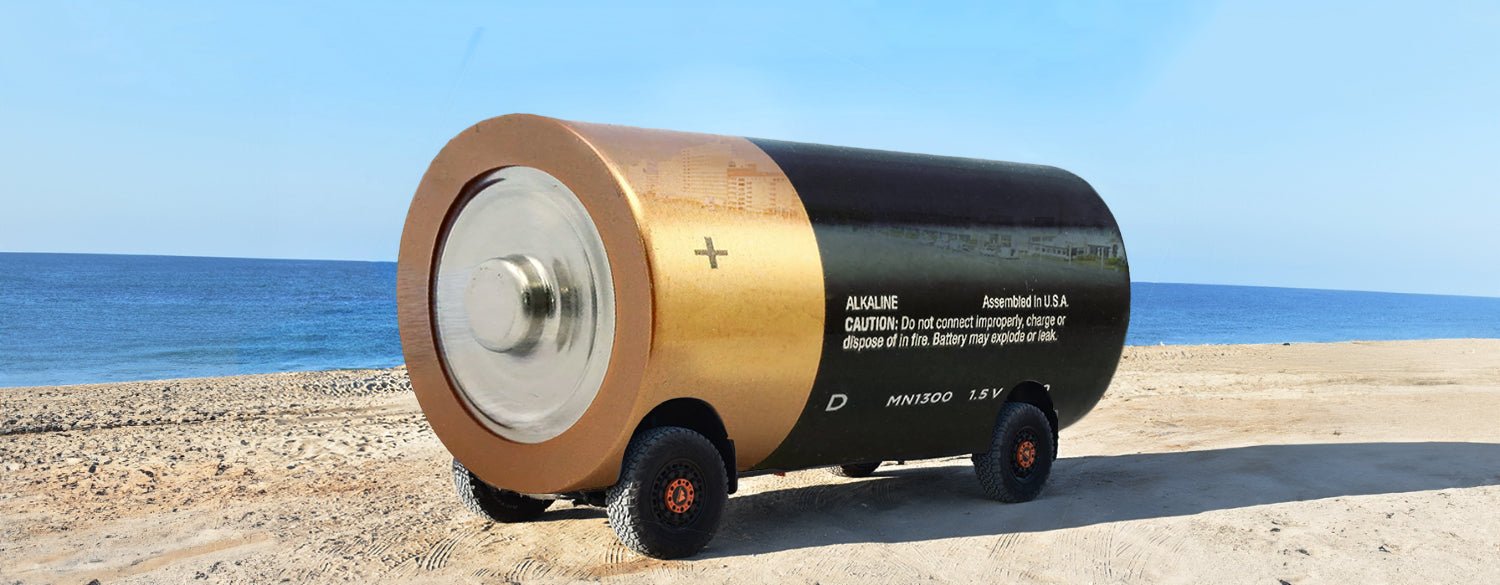The answer to this question is no, not all power sources in overlander vehicles are created equal. Overlanding often involves extended trips to remote locations, and having reliable and efficient electrical systems is crucial for powering various devices and equipment. Here are some key considerations:
- Battery Types: Overlander vehicles commonly use two types of batteries: starting batteries and auxiliary (deep cycle) batteries. Starting batteries provide high bursts of power to start the engine, while deep-cycle batteries are designed for continuous, low-level power over an extended period. Deep-cycle batteries are typically preferred for auxiliary power needs.
- Battery Capacity: The capacity of your auxiliary battery bank is important. It should be able to provide enough power to run your devices, appliances, and equipment without draining too quickly. Consider factors like your expected power consumption and the number of days between recharges,
- Charging System: Overlanders often use dual-battery systems with a separator to isolate the starting battery from the auxiliary battery when the engine is off. This prevents you from accidentally draining your starting battery. Solar panels, alternators, and generators are common methods for recharging auxiliary batteries.
- Inverters: An inverter allows you to convert DC power from your batteries into AC power for devices that require it. The size and capacity of your inverter should match your power needs. High-wattage appliances like refrigerators may require larger inverters.
- Solar Power: Solar panels can be a reliable source of power, especially in remote areas where there are no other charging options. Investing in efficient solar panels and charge controllers is essential for maintaining a steady source of power.
- Wiring and Fusing: Proper wiring and fusing are essential for safety and efficiency. Ensure that the wiring can handle the current and that you have appropriate fuses to protect the system from overloads.
- Power Management: A power management system or battery monitoring system can help you keep track of your power usage and the state of your batteries. This allows you to avoid over-discharging your batteries, which can lead to damage and reduced lifespan.
- Efficiency: Choose energy-efficient appliances and equipment to minimize power consumption. LED lighting, efficient refrigerators, and smart power management can go a long way in conserving energy.
- Redundancy: Having multiple power sources, such as a combination of solar, alternator charging, and a generator, can provide redundancy and help ensure you always have power available.
- Safety: Safety is paramount. Ensure your electrical system is well-installed and follows best practices for avoiding fire hazards and electrical shorts.



